
The Best America’s Cup Final Ever?
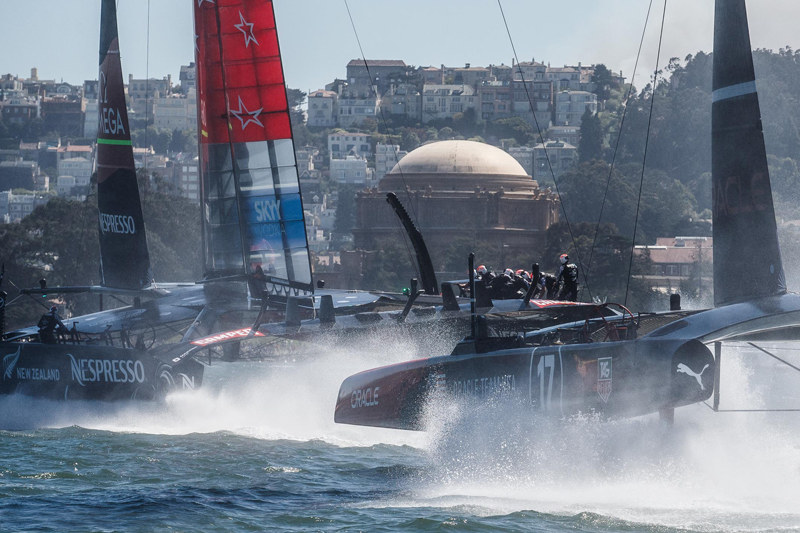
"I’d hazard a guess that today’s opening race (Saturday) was the best racing ever seen in the 162 years of the America’s Cup," wrote Dana Johannsen of the New Zealand Herald. Johannsen cited the (very) high-speed game of chicken, with the lead changing several times. The best moment was on the third leg of the first race, when Oracle Team USA passed Emirates Team New Zealand for the first lead change of the summer. It was the kind of competitive sailing that everybody had waited three years for, and almost suddenly justified the Coutts/Ellison vision.
If Saturday’s racing was the best ever in 162 years of the America’s Cup, Sunday’s racing was even better. With the Kiwis having taken the first two races on Saturday, there was talk of the Kiwis having a faster boat and smoother crew work, which would lend itself to a 9 to -2 Kiwi rout. But thanks to aggressive starting line tactics on the part of Oracle’s James Spithill, the American team won both starts. They would lose a furious tacking battle — in 72-ft cats! — on the windward leg and ultimately Sunday’s first race. Having lost three straight races, the last one after having a commanding lead, things were looking really grim for Oracle. But Spithill got another great start, and managed to hold off ETNZ, which was pursuing OTUSA at 40+ knots. The time between them at the finish was a mere eight seconds. There hadn’t been anything like it in any previous America’s Cup.
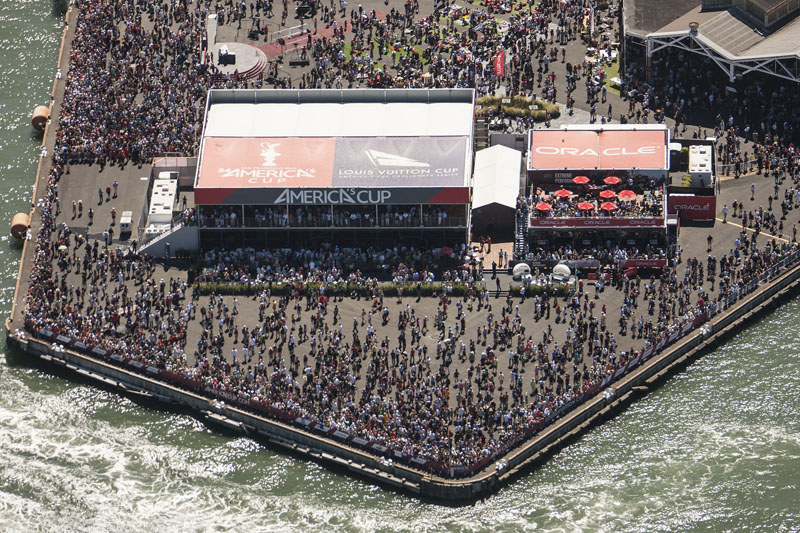
We watched Saturday’s race in person from the spit down by the Golden Gate YC. Despite it being one of the most beautiful and warm days of the year on the Bay, there was still a fine breeze for AC72 racing. There is nothing like seeing the two cats go at each other in speeds of excess of 40 knots. It’s impossible to appreciate the ballsy derring-do of the sailors on these huge boats flying along at astounding speeds unless you see it directly with your own eyes.
As we watched Sunday’s race on television, we realized that maybe the only thing better than seeing the racing in person was watching it on TV. The combination of the superb onboard and helicopter videos, plus the fantastic graphics of Stan Honey and his crew — without which none of the aerial shots or racing would have made any sense — was mind-boggling. Having not had real-time access to the video on Saturday, we missed seeing how close — just feet apart — the two boats often were.
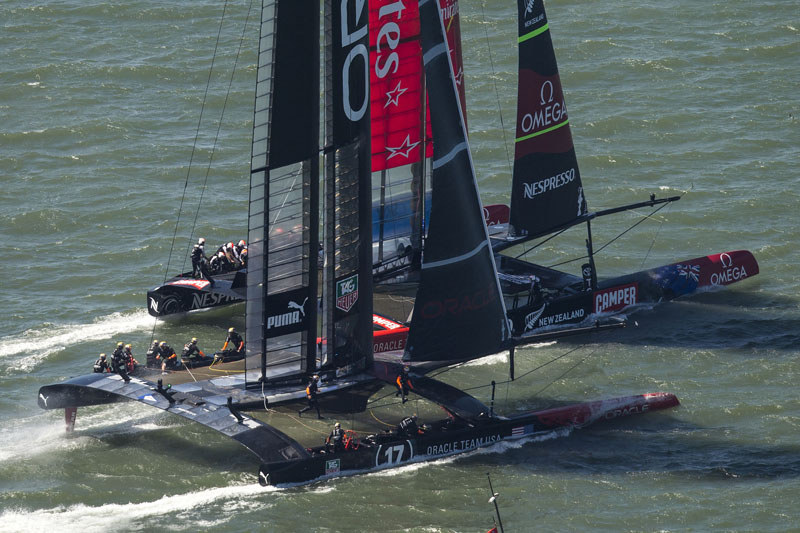
It turns out the only way to fully appreciate the America’s Cup is to be there in person, but with a site line to a big screen television or an iPad.
The weekend’s America’s Cup racing was the result of a perfect storm of things going right. Let’s count them:
1) San Francisco and San Francisco Bay sparkled like a gem. The only downside is that probably another 100,000 people decided they want to move here.
2) San Francisco Bay provided excellent sailing conditions. The wind was stronger than forecast, allowing the boats to hit more than 40 knots in all four races. The wind for the fourth race was the best, as it was very near the limit for racing, and very near the limit at which the crews could control the boats. The tide added a nice additional tactical element.
3) The AC72s were, in the moderate wind conditions, the perfect racing vehicles. They were so fast that an error on the part of either team could result in gains or losses of 100 yards or more, making the outcome of the races unclear until the very end.
4) But the thing that really made it special was the aggressive and competitive racing. The Louis Vuitton Series wasn’t racing, it was a series of parades, and not very interesting ones at that. But the America’s Cup has been totally different because of the great competition. The starts have been aggressive, the leads have changed a number of times, boats have touched, they’ve crossed tacks with just feet to spare. Who said you can’t match race big cats?
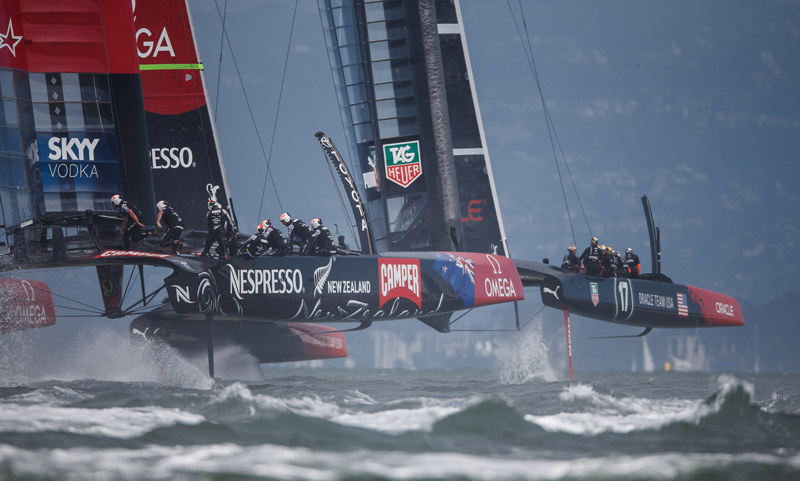
The Kiwis have indicated that if they win the Cup, the next one will be sailed in monohulls. But now maybe not. For as Johannsen also wrote, "There is little doubt that whoever wins the Auld Mug, these types of boats are the future of America’s Cup racing. In the space of one 25-minute race, the two teams managed to convert not only those skeptical traditionalists who may have been longing to return to the ‘glory days’ of monohull racing, as well as a new breed of non-sailing fans." We couldn’t agree more. Can you imagine how boring it would be to go back to boats that could only do 20 knots?
If you haven’t seen any of the racing in person yet, don’t miss it. Cut out on work on Tuesday or Thursday, and check it out. Bring your iPad and watch it as it plays out. You won’t regret it.
So who is going to win? As helmsman Dean Barker of ETNZ said, it would take about four races to get a good idea of what’s going on. The way we see it, it’s just the opposite of what the experts predicted — OTUSA is better in the strongest winds than the less-stable Kiwi boat. But the latter is better in lighter winds, particularly when coming out of tacks and getting onto one hull quicker. To have a chance, OTUSA will have to continue to aggressively win the start, tack as little as possible, and work on getting their crew work to be as smooth as that of the Kiwis.
The Superyacht Regatta is schedule to race on the Bay today, Wednesday and Friday. As was the case with the Louis Vuitton Series, this regatta suffers from a lack of entries. When they held it with the America’s Cup in New Zealand, they’d get 30+ boats over 100 feet. Alas, for the series on the Bay, a melange of just eight boats is expected. But when that fleet includes the 180-ft schooner Adela, winner of this year’s St. Barth Bucket, it’s still worth checking out.(See below for more.)
Superyacht Regatta Begins Today
If you watched the weekend’s America’s Cup action from the AC Park or from a boat on the water, you undoubtedly noticed a bevy of spectacular yachts that don’t normally grace the Bay. Today, some of them will transition from spectator status to racing mode during Race One of the Superyacht Regatta. It’s slated to begin at 12:30 today, according to the event’s organizer, Boat International Media.
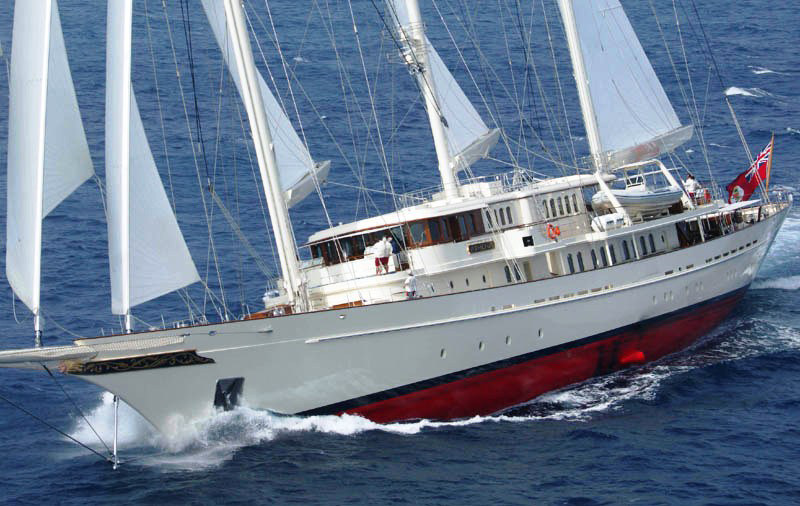
This multi-million-dollar collection of premier yachts is impressive, to say the least:
- 139-ft replica schooner America
- 180-ft Hoek-designed Adele
- 182-ft Dijkstra-designed Adela
- 285-ft Dijkstra-designed Athena
- 80-ft Dynamique Coconut
- 100-ft Brenta-designed Chrisco
- 84-ft Farr-designed USA 76
- 90-ft Hoek-designed Kealoha
Needless to say, handicapping such a disparate fleet is a challenge. The International Super Yacht Rule (ISYR) is used here (formerly known as the ‘Bucket Rule’), where "the rule authority is committed to using a blend of scientific method and observed speed," organizers say, "coupled with a commitment to fairness, to produce handicaps that enable any well-sailed yacht to have a reasonable chance at a podium finish in every race."
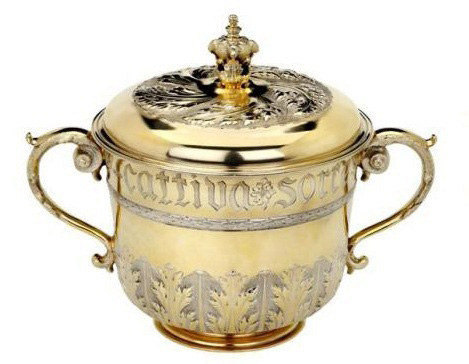
Possible courses include both inside- and outside-the-Bay routes, as shown here. Additional superyacht races will be held this Wednesday and Friday, which are AC 34 laydays. You can also get an up-close view of several of these beauties all week, as they will be stern-to the Pier 27 wharf at the AC Park. So go ahead and fuel your billionaire fantasies and have a look at these sparkling gems of maritime artistry.
